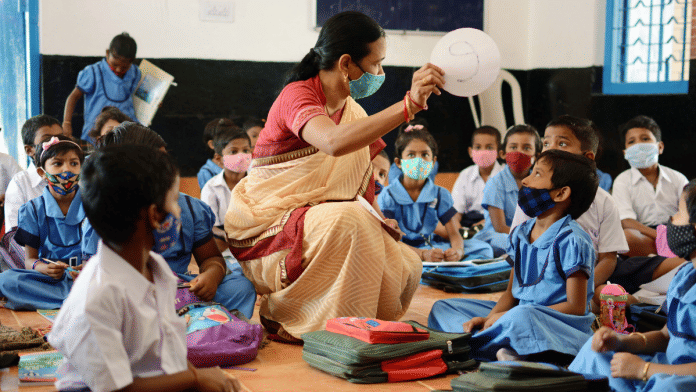Thank you dear subscribers, we are overwhelmed with your response.
Your Turn is a unique section from ThePrint featuring points of view from its subscribers. If you are a subscriber, have a point of view, please send it to us. If not, do subscribe here: https://theprint.in/subscribe/
A forest ecosystem is such an interconnected place I am told, in the stunning Netflix docuseries “Our living world”. Every biotic and abiotic factor is interconnected Cate Blanchett reiterates using glowing blue lines that run on the screen. The spectacular photography and some rare closeups like that of the squid eggs keeps me glued to the screen. A parallel stream of thoughts starts running in my head. Can ecosystem be used as a metaphor for a classroom to understand it better? Is not everything in a classroom from students to teacher, to the teacher’s attitude, the internal dynamics amongst the students, the sitting plan not intricately interconnected in more than many ways? My thoughts drift away as Cate Blanchette continues talking authoritatively. I think of classrooms.
That little girl in the last row, often staring out of the window, the boy who sits on the extreme left and complains that he cannot see the board, the pigtailed Picasso who is the first to complete all written work are equally important components of this system. They all need equal sunlight and warmth. Just like in an ecosystem a classroom too harbours deep connections between most disparate things. A certain tone of the teacher’s voice, lack of transparency in the examination system, high expectations by the parents, lack of interest, has a tangible effect in the performance of the students. For over 2 decades I have observed an interplay of these parameters and its impact on learning output of students. Throw in an empathetic teacher in this mix and tables just turn. Often students, even if they don’t particularly enjoy the subject, still exert their utmost effort to avoid disappointing their parents.
School systems that understand this, encourage positive reinforcement and open communication between the teacher and the taught. This alone has an immense effect on the health of the classroom. Like a stable ecosystem has many species living in a fine balance. Open communication makes classroom a fertile place for all kinds of questions, from all corners. Can educators be trained to achieve this in their classrooms instead of relying solely on their instincts? After all who if not the students themselves have the highest vested interest in enhancing their academic performance? Why will they not work if the journey is interesting and the mentor adept?
Another factor that impacts the life inside a classroom is undoubtedly the seating plan. A traditional row system puts a child in an invisible prison like plan. Especially if the classroom is crowded and does not permit even a stretch? An average length of a class is 45 minutes. The children are expected to sit through it, take down notes and seamlessly switch to the next class for the next 45 minutes and then the next before they get a 20 minutes break. We have enough scientific data to prove that attention span improves when we take short break or a stretch or deep breathe. By ignoring these facts, the school are ignoring a key factor in working of class room ecosystems. Normalising a little free movement even while the class is going on especially for primary and middle school should be considered.
So, what stops the policymakers and stake holders in taking corrective or progressive steps towards better classroom? Perhaps the answer lies in the fact that children and their problems remain unheard in the society, their complains are not ‘real’. Parents feel complaining to schools would in some way negatively impact their children.
Does a classroom and its components whet the natural curiosity of a child? Are they places of dread and fear or a refuge for a curious mind? The fine balance in the ecosystem of the fragile ecosystem is being disrupted, warns Cate Blanchett. Could fixing class rooms and making them safe spaces with something to nurture in its every member be a step towards restoring the balance in our polarised society?
These pieces are being published as they have been received – they have not been edited/fact-checked by ThePrint


